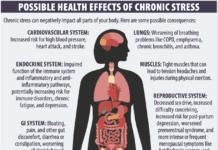Could a serving or two of spinach or lettuce a day help keep diabetes away? Thats the suggestion of a new meta-analysis linking consump-tion of green leafy vegetables with reduced risk of type 2 diabetes. Par-ticipants who ate the most green leafy vegetables-an average of 1.35 servings daily-were 14% less likely to develop diabetes than those consuming the least (an average 0.2 servings daily).Patrice Carter, a PhD candidate at the University of Leicester in England, and colleagues noted the potential importance of their findings given the recent dramatic increase in type 2 diabetes diagnoses. Dietary fac-tors are important and are potentially modifiable risk factors, they added in the journal BMJ. There has been a focus on the role of carbohydrates and fiber, but the relation between fruit and vegetable intake and incidence of type 2 diabetes is not fully understoodTo try to sort through the some-times-conflicting evidence on diabetes risk and fruit and vegetable consump-tion, Carter and colleagues pored over 3,446 previously published studies. They ultimately identified six prospec-tive cohort studies that met their strict criteria, with a combined 223,512 sub-jects. The ages of participants ranged from 30 to 74, while study lengths ranged from 4.6 to 23 years (an aver-age 13.4 years).Four of the studies specifically ex-amined intake of green leafy vegetables, and all showed a benefit of consuming greater quantities. An overall trend was also seen toward reduced diabetes risk with higher consumption of fruits and of fruits and vegetables overall, but the data werent strong enough to be statistically significant.Researchers standardized the defini-tion of a serving as 106 grams (3.73 ounces). But defining green leafy veg-etables proved a bit trickier. The studies generally included spinach, kale and lettuce, with one adding Chinese greens and other greens. Technically, though, Carter and colleagues pointed out, green leafy vegetables also encompass-es brassicas such as broccoli, cabbage, Brussels sprouts and cauliflower, as well as herbs like parsley, dill and fennel.Fruits and vegetables in general, and green leafy vegetables in particular, may help prevent chronic disease because of their antioxidant content, the researchers added: Green leafy vegetables, such as spinach, have been shown to contain high concentrations of beta-carotene and vitamin C, both of which confer antioxidant proper-ties. Green leafy vegetables also contain polyphenols, which are known for their antioxidant properties.
| Eating Your Vegetables- by the Numbers How many vegetables-green leafy or otherwise-do you need to eat? The USDAs MyPyramid www.mypyramid.gov recommends that women ages 19-50 eat 2 1/2 cups of vegetables daily and that women ages 51-plus aim for 2 cups. Men 19-50 should eat 3 cups daily; 51-plus, 2 1/2 cups. But not all cups are equal: In general, 1 cup of raw or cooked vegetables or vegetable juice, or 2 cups of raw leafy greens can be considered as 1 cup from the vegetable group. Try to eat a variety from each vegetable subgroup over the course of a week: dark green vegetables, orange vegetables, dry beans and peas, starchy vegetables, and other vegetables |
An additional factor could be the magnesium content in green leafy veg-etables. Another recent meta-analysis found magnesium intake inversely asso-ciated with incidence of type 2 diabetes. Such veggies are also good sources of alpha-linolenic acid (ALA), an omega-3 fat thought to be important to insulin sensitivity within skeletal muscle.In any case, such theories emphasize the importance of getting these nutri-ents in foods rather than pills. Trials of supplements for disease prevention, Carter and colleagues noted, have mostly been disappointing.The role of an overall healthy diet was echoed in an accompanying edito-rial by Jim Mann, PhD, of the Univer-sity of Otago in New Zealand and Dag-finn Aune, BSc, of Imperial College in London: Although some studies have shown associations between individual vegetables and fruits and coronary heart disease, stroke and some cancers… most current recommendations focus on food groups as a whole rather than magic bullets. The key takeaway, they wrote, was the importance of increasing fruit and vegetable intake overall.Mann and Aune added, The find-ings are also a useful reminder to clini-cians that giving dietary advice may be just as beneficial, if not more so, than prescribing drugs to patients at risk of chronic disease.TO LEARN MORE: BMJ, August 19, 2010, dx.doi.org/10.1136/bmj.c4229. American Diabetes Associa-tion, (800) 342-2383, AskADA@diabetes.org, www.diabetes.org.























